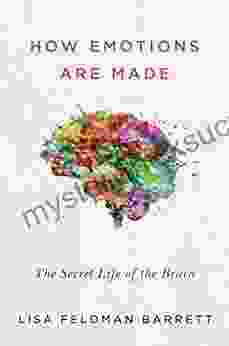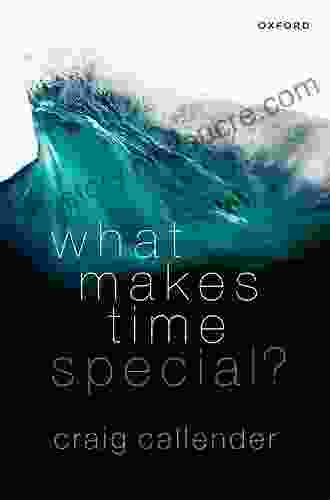Unveiling the Enigmatic Tapestry of Emotional Experiences: How Emotions Are Made

Emotions are an inherent and pervasive aspect of human existence, shaping our perceptions, decisions, and interactions. They can range from the fleeting ripples of joy to the tumultuous depths of despair. Understanding the intricate workings of emotions is a realm of scientific fascination and crucial for fostering emotional intelligence and well-being. This comprehensive article delves into the multifaceted nature of emotions, exploring the complex mechanisms that orchestrate their creation.
Emotions are not mere fleeting sensations but rather intricate physiological and psychological phenomena. Their orchestration involves a symphony of brain structures, hormones, and cognitive processes.
The amygdala, a small almond-shaped structure nestled within the temporal lobes, plays a pivotal role in the initial processing of emotions. When presented with a stimulus, the amygdala rapidly evaluates its emotional significance, triggering appropriate responses. For instance, in the face of a perceived threat, the amygdala activates the sympathetic nervous system, preparing the body for fight or flight.
4.6 out of 5
| Language | : | English |
| File size | : | 21472 KB |
| Text-to-Speech | : | Enabled |
| Screen Reader | : | Supported |
| Enhanced typesetting | : | Enabled |
| Word Wise | : | Enabled |
| Print length | : | 449 pages |
Another key brain area involved in emotion is the prefrontal cortex (PFC),particularly the ventromedial prefrontal cortex (vmPFC). The vmPFC is involved in complex emotional processes such as decision-making and the regulation of emotional responses. It helps to temper the impulsive outputs of the amygdala, ensuring that emotional reactions are appropriate and adaptive.
Hormones, chemical messengers produced by the endocrine system, also play a crucial role in emotional experiences. Epinephrine (adrenaline),released by the adrenal glands in response to stress, fuels the body's fight or flight response. Oxytocin, often referred to as the "love hormone," promotes bonding and social connection.
Emotions are not solely driven by biological processes but are also shaped by our thoughts, beliefs, and experiences. Our cognitive appraisal of a situation influences our emotional response. For example, interpreting a situation as a threat can trigger fear, while perceiving it as a challenge can elicit excitement.
Emotions are often categorized into two types: primary and secondary emotions.
Primary emotions are considered basic, hardwired emotional responses that are present across cultures. They emerge early in life and are typically triggered by instinctual or innate stimuli. Psychologist Paul Ekman identified six primary emotions: happiness, sadness, anger, fear, surprise, and disgust.
Secondary emotions are more complex and develop later in childhood. They typically involve a blend of primary emotions and are triggered by more complex social and cognitive factors. Examples of secondary emotions include guilt, shame, pride, and love.
The emotional tapestry is not static but rather a dynamic spectrum with countless hues and variations. Each individual experiences emotions in a unique way, influenced by their personality, culture, and past experiences.
Emotions do not exist in isolation but rather along a continuum. For instance, the intensity of fear can range from mild apprehension to paralyzing terror. The same emotion can manifest differently in different individuals or even at different times in the same person.
Culture profoundly shapes the way emotions are expressed and experienced. Different societies have varying norms and expectations regarding emotional displays. In some cultures, emotional restraint is valued, while in others, expressive displays are encouraged.
Emotional intelligence, the ability to understand and manage one's own emotions and those of others, is a vital life skill. It enables us to navigate social interactions, make effective decisions, and cope with stress.
The first step towards emotional intelligence is developing emotional awareness, the ability to identify and understand our own emotions as they arise. Paying attention to bodily sensations and thoughts associated with different emotions can help us gain insight into our inner world.
Once we recognize our emotions, we need to learn to regulate them effectively. This does not mean suppressing or denying emotions but rather managing them in a way that promotes well-being. Techniques such as deep breathing, mindfulness, and cognitive reframing can help us calm down strong emotions and respond in a more balanced way.
Emotions are like intricate masterpieces, woven from the threads of our biology, psychology, and experiences. Understanding how emotions are made helps us navigate the complexities of our inner lives, build stronger relationships, and make wiser choices. By embracing and harnessing the power of our emotions, we can unlock a world of greater well-being, fulfillment, and connection.
- Figure 1: "The Brain's Emotional Circuits" by National Institute of Mental Health [Public domain]
- Figure 2: "The Emotional Spectrum" by Author, created using Canva
4.6 out of 5
| Language | : | English |
| File size | : | 21472 KB |
| Text-to-Speech | : | Enabled |
| Screen Reader | : | Supported |
| Enhanced typesetting | : | Enabled |
| Word Wise | : | Enabled |
| Print length | : | 449 pages |
Do you want to contribute by writing guest posts on this blog?
Please contact us and send us a resume of previous articles that you have written.
 Fiction
Fiction Non Fiction
Non Fiction Romance
Romance Mystery
Mystery Thriller
Thriller SciFi
SciFi Fantasy
Fantasy Horror
Horror Biography
Biography Selfhelp
Selfhelp Business
Business History
History Classics
Classics Poetry
Poetry Childrens
Childrens Young Adult
Young Adult Educational
Educational Cooking
Cooking Travel
Travel Lifestyle
Lifestyle Spirituality
Spirituality Health
Health Fitness
Fitness Technology
Technology Science
Science Arts
Arts Crafts
Crafts DIY
DIY Gardening
Gardening Petcare
Petcare Gregory A Kompes
Gregory A Kompes Theodora Papatheodorou
Theodora Papatheodorou Mark Young
Mark Young Philip Purser Hallard
Philip Purser Hallard Michael Blastland
Michael Blastland Paul A Offit
Paul A Offit Celeste Headlee
Celeste Headlee Nikki Carroll
Nikki Carroll Sterling Test Prep
Sterling Test Prep William L Sullivan
William L Sullivan Dorothy Canfield Fisher
Dorothy Canfield Fisher Jesse Romero
Jesse Romero Lisa Feldman Barrett
Lisa Feldman Barrett Victoria Honeybourne
Victoria Honeybourne Thomas Achatz
Thomas Achatz John R Mabry
John R Mabry Matt Mullenix
Matt Mullenix Stedman Graham
Stedman Graham Jill Angie
Jill Angie James W Anderson
James W Anderson Richard Bullivant
Richard Bullivant Kat Davis
Kat Davis Eugenia G Kelman
Eugenia G Kelman Mo Gawdat
Mo Gawdat C J Archer
C J Archer Natasha Daniels
Natasha Daniels Ira K Wolf
Ira K Wolf Susan Garcia
Susan Garcia Wyatt Mcspadden
Wyatt Mcspadden Gary Mayes
Gary Mayes Mary C Townsend
Mary C Townsend Sophie D Coe
Sophie D Coe Leah Zani
Leah Zani John J Ratey
John J Ratey Emt Basic Exam Prep Team
Emt Basic Exam Prep Team Mona Bijjani
Mona Bijjani Elaine Tyler May
Elaine Tyler May Oprah Winfrey
Oprah Winfrey Rita Golden Gelman
Rita Golden Gelman Julia Ann Clayton
Julia Ann Clayton Lily Field
Lily Field Bruce Watt
Bruce Watt Sarah Berman
Sarah Berman Byron L Reeder
Byron L Reeder Dian Olson Belanger
Dian Olson Belanger Tanya Hackney
Tanya Hackney Eric P Lane
Eric P Lane Luc Mehl
Luc Mehl Howard E Mccurdy
Howard E Mccurdy Dina Nayeri
Dina Nayeri Joel Best
Joel Best Donna Goldberg
Donna Goldberg Martha Finley
Martha Finley William M Baum
William M Baum Max Lugavere
Max Lugavere Shea Ernshaw
Shea Ernshaw Melanie Anne Phillips
Melanie Anne Phillips Tibor Rutar
Tibor Rutar Jason Runkel Sperling
Jason Runkel Sperling John Jamieson
John Jamieson Tom Cunliffe
Tom Cunliffe Steve Barrett
Steve Barrett Romola Anderson
Romola Anderson Katharine Mcgee
Katharine Mcgee Jeff Belanger
Jeff Belanger George Daniel
George Daniel Sammy Franco
Sammy Franco Kaplan Test Prep
Kaplan Test Prep Elizabeth May
Elizabeth May Jim Supica
Jim Supica Elena Paige
Elena Paige Jamie Marich
Jamie Marich Hecateus Apuliensis
Hecateus Apuliensis Declan Lyons
Declan Lyons Jeff Scheetz
Jeff Scheetz Melissa A Priblo Chapman
Melissa A Priblo Chapman Joseph Correa
Joseph Correa Richard Henry Dana
Richard Henry Dana Veronica Roth
Veronica Roth Neville Goddard
Neville Goddard Lisa Hopp
Lisa Hopp Charles Staley
Charles Staley Bunmi Laditan
Bunmi Laditan Charles Salzberg
Charles Salzberg The Atavist
The Atavist Helen Zuman
Helen Zuman Silvia Dunn
Silvia Dunn Emily Lowry
Emily Lowry Ashley Eckstein
Ashley Eckstein Upton Sinclair
Upton Sinclair Jasmine Shao
Jasmine Shao Dick Hannula
Dick Hannula Issai Chozanshi
Issai Chozanshi Trevor Thomas
Trevor Thomas Scott Cawthon
Scott Cawthon Oliver Sacks
Oliver Sacks E Ink Utilizer
E Ink Utilizer Chris Bonington
Chris Bonington Nawuth Keat
Nawuth Keat Joanne V Hickey
Joanne V Hickey Orangepen Publications
Orangepen Publications Marc Van Den Bergh
Marc Van Den Bergh Emily Writes
Emily Writes Michael Gurian
Michael Gurian John Moren
John Moren Jim Al Khalili
Jim Al Khalili John Kretschmer
John Kretschmer Freya Pickard
Freya Pickard John Burroughs
John Burroughs Kathleen Flinn
Kathleen Flinn R Scott Thornton
R Scott Thornton Meg Cabot
Meg Cabot David Tanis
David Tanis C S Lewis
C S Lewis Lingo Mastery
Lingo Mastery Don S Lemons
Don S Lemons Karen J Rooney
Karen J Rooney Mark Hansen
Mark Hansen Bruce Van Brunt
Bruce Van Brunt Emma Warren
Emma Warren Douglas P Fry
Douglas P Fry Jess J James
Jess J James Wayne Coffey
Wayne Coffey Matt Racine
Matt Racine Susan Frederick Gray
Susan Frederick Gray Jeffrey L Kohanek
Jeffrey L Kohanek Linda Rosenkrantz
Linda Rosenkrantz Sarah Prager
Sarah Prager Lottie Bildirici
Lottie Bildirici Healthfit Publishing
Healthfit Publishing Carlos I Calle
Carlos I Calle Mike X Cohen
Mike X Cohen Samantha De Senna Fernandes
Samantha De Senna Fernandes Michael A Tompkins
Michael A Tompkins Sonia Shah
Sonia Shah Ransom Riggs
Ransom Riggs Ivy Hope
Ivy Hope Stephen Harrison
Stephen Harrison Stacey Rourke
Stacey Rourke Kathy Woods
Kathy Woods Destiny S Harris
Destiny S Harris Justin Coulson
Justin Coulson Greg W Prince
Greg W Prince David Wilber
David Wilber Mcgraw Hill
Mcgraw Hill Kyra Phillips
Kyra Phillips Carol Inskipp
Carol Inskipp Pamela Weintraub
Pamela Weintraub Zachery Knowles
Zachery Knowles Jennifer Rose
Jennifer Rose Nick Gamis
Nick Gamis Lily Raff Mccaulou
Lily Raff Mccaulou Wilhelm Reich
Wilhelm Reich Caleb J Tzilkowski
Caleb J Tzilkowski Dr Tommy John
Dr Tommy John Pam Flowers
Pam Flowers Valerie Poore
Valerie Poore Christine Mari Inzer
Christine Mari Inzer Ian Leslie
Ian Leslie Ed Housewright
Ed Housewright Ken Schwaber
Ken Schwaber Sam Priestley
Sam Priestley Skip Lockwood
Skip Lockwood William Ian Miller
William Ian Miller Cassandra Mack
Cassandra Mack Clement Salvadori
Clement Salvadori Jacob Erez
Jacob Erez Cal Newport
Cal Newport Darcy Lever
Darcy Lever Jennifer Appel
Jennifer Appel Lynn Butler Kisber
Lynn Butler Kisber Matt Price
Matt Price Daniel Prince
Daniel Prince L W Jacobs
L W Jacobs David Eagleman
David Eagleman J R Rain
J R Rain Sarah Jacoby
Sarah Jacoby Thomas Daniels
Thomas Daniels Lianna Marie
Lianna Marie Philippe Karl
Philippe Karl John Flanagan
John Flanagan Keith Brewer
Keith Brewer Martin Davies
Martin Davies Elisabeth Elliot
Elisabeth Elliot Lsat Unplugged
Lsat Unplugged Jim Warnock
Jim Warnock Mark Stanton
Mark Stanton Nicolas Bergeron
Nicolas Bergeron Tyler Trent
Tyler Trent Graham Norton
Graham Norton Sheila A Sorrentino
Sheila A Sorrentino Phil Williams
Phil Williams Steven W Dulan
Steven W Dulan Maxine A Goldman
Maxine A Goldman Kelly Rowland
Kelly Rowland Vincent Chidindu Asogwa
Vincent Chidindu Asogwa Robert Garland
Robert Garland Robert Walker
Robert Walker Charu C Aggarwal
Charu C Aggarwal Jim Wiese
Jim Wiese Peter J D Adamo
Peter J D Adamo Michael Chatfield
Michael Chatfield Collins Easy Learning
Collins Easy Learning Tey Meadow
Tey Meadow Bruce W Harris
Bruce W Harris Dan Romanchik Kb6nu
Dan Romanchik Kb6nu Sherri L Jackson
Sherri L Jackson Rebecca Musser
Rebecca Musser Katherine D Kinzler
Katherine D Kinzler John Grehan
John Grehan Ruthellen Josselson
Ruthellen Josselson John H Cunningham
John H Cunningham Douglas Preston
Douglas Preston Roger J Davies
Roger J Davies John M Marzluff
John M Marzluff Brandy Colbert
Brandy Colbert Terry Laughlin
Terry Laughlin Marcia Scheiner
Marcia Scheiner Peterson S
Peterson S Jack Disbrow Gunther
Jack Disbrow Gunther Della Ata Khoury
Della Ata Khoury Doug Cook
Doug Cook Rick Trickett
Rick Trickett Michael Mewshaw
Michael Mewshaw Pia Nilsson
Pia Nilsson Joseph Moss
Joseph Moss Huberta Wiertsema
Huberta Wiertsema Richard W Voelz
Richard W Voelz Ned Feehally
Ned Feehally Sarah Baker
Sarah Baker Steven Kerry Brown
Steven Kerry Brown Ivan Gridin
Ivan Gridin Rowena Bennett
Rowena Bennett Katie Fallon
Katie Fallon Albert Jeremiah Beveridge
Albert Jeremiah Beveridge William Ellet
William Ellet Chris Morton
Chris Morton Graham Hancock
Graham Hancock Hibiki Yamazaki
Hibiki Yamazaki Sylvia Williams Dabney
Sylvia Williams Dabney Lauren Manoy
Lauren Manoy Ivar Dedekam
Ivar Dedekam W D Wetherell
W D Wetherell Dounya Awada
Dounya Awada Henry Malone
Henry Malone Ron Senyor
Ron Senyor Roger Marshall
Roger Marshall Niels H Lauersen
Niels H Lauersen Fern Schumer Chapman
Fern Schumer Chapman John Vince
John Vince Denise May Levenick
Denise May Levenick Francis Glebas
Francis Glebas Albert Rutherford
Albert Rutherford Stella Cottrell
Stella Cottrell Ron Rapoport
Ron Rapoport Konstantinos Mylonas
Konstantinos Mylonas Norman Thelwell
Norman Thelwell Marco Wenisch
Marco Wenisch Marc Bona
Marc Bona Winslow Tudor
Winslow Tudor Dr Monika Chopra
Dr Monika Chopra Megan Miller
Megan Miller Rob Pate
Rob Pate Rand Cardwell
Rand Cardwell Chris Pountney
Chris Pountney Sarah Ockwell Smith
Sarah Ockwell Smith K C Cole
K C Cole S M Kingdom
S M Kingdom Michelle Travis
Michelle Travis Bryan Litz
Bryan Litz Paul Lobo
Paul Lobo Larry Larsen
Larry Larsen Jessica Holsman
Jessica Holsman Martina Mcbride
Martina Mcbride Stian Christophersen
Stian Christophersen Thomas Carothers
Thomas Carothers Sara Gaviria
Sara Gaviria Elmer Keith
Elmer Keith Richard C Francis
Richard C Francis Stephen King
Stephen King Dennis Adler
Dennis Adler Maurice J Thompson
Maurice J Thompson Meghan Daum
Meghan Daum Narain Moorjani
Narain Moorjani Matthew Marchon
Matthew Marchon Steve Guest
Steve Guest Helen Webster
Helen Webster Dvora Meyers
Dvora Meyers Dory Willer
Dory Willer Nedu
Nedu Om Krishna Uprety
Om Krishna Uprety Robert Larrison
Robert Larrison Bryce Carlson
Bryce Carlson Craig Callender
Craig Callender Kevin Houston
Kevin Houston Martina D Antiochia
Martina D Antiochia Scarlett V Clark
Scarlett V Clark Caroline Manta
Caroline Manta C F Crist
C F Crist M E Brines
M E Brines Jessica Howard
Jessica Howard Joyceen S Boyle
Joyceen S Boyle Kevin A Morrison
Kevin A Morrison Hugh Aldersey Williams
Hugh Aldersey Williams Mary Pagones
Mary Pagones Natasha Ngan
Natasha Ngan Jimmy Chin
Jimmy Chin David Savedge
David Savedge E W Barton Wright
E W Barton Wright Nigel Cawthorne
Nigel Cawthorne Winky Lewis
Winky Lewis J D Williams
J D Williams Richard Drake
Richard Drake Arrl Inc
Arrl Inc Scott Hartshorn
Scott Hartshorn Robert D Gibbons
Robert D Gibbons Jen Howver
Jen Howver Dan Flores
Dan Flores Gary Lewis
Gary Lewis Bruce Sutherland
Bruce Sutherland Cecil B Hartley
Cecil B Hartley Kacen Callender
Kacen Callender Donna R Causey
Donna R Causey David Martin
David Martin Frederick Jackson Turner
Frederick Jackson Turner Joe Baker
Joe Baker Ronald T Potter Efron
Ronald T Potter Efron Nicola S Dorrington
Nicola S Dorrington Db King
Db King Heather Balogh Rochfort
Heather Balogh Rochfort Buddy Levy
Buddy Levy Jim West
Jim West Barbara Acello
Barbara Acello Jack Canfield
Jack Canfield Tony E Adams
Tony E Adams Mathew Orton
Mathew Orton Aaron Reed
Aaron Reed Eric R Dodge
Eric R Dodge Jane Brocket
Jane Brocket Charles Sanger
Charles Sanger Kendall Rose
Kendall Rose Matt Baglio
Matt Baglio Heather Jacobson
Heather Jacobson Robert Moor
Robert Moor Cathy Glass
Cathy Glass Caitlyn Dare
Caitlyn Dare Nicholas Tomalin
Nicholas Tomalin Earl G Williams
Earl G Williams Kruti Joshi
Kruti Joshi Shyima Hall
Shyima Hall Robert Edward Grant
Robert Edward Grant Carrie Hope Fletcher
Carrie Hope Fletcher Tim Glover
Tim Glover Lee Jackson
Lee Jackson Nicola Yoon
Nicola Yoon Scott Mcmillion
Scott Mcmillion Sandra Niche
Sandra Niche Ronit Irshai
Ronit Irshai Deirdre V Lovecky
Deirdre V Lovecky Simon A Rego
Simon A Rego Lynette Noni
Lynette Noni Tim Freke
Tim Freke Tamara Ferguson
Tamara Ferguson Troy Horne
Troy Horne Phil Bourque
Phil Bourque Richard Barrett
Richard Barrett Susan Orlean
Susan Orlean Nick Tumminello
Nick Tumminello Laurie Notaro
Laurie Notaro Pedro Urvi
Pedro Urvi Don Allen Jr
Don Allen Jr Lois Lowry
Lois Lowry Law School Admission Council
Law School Admission Council Marisa Peer
Marisa Peer Marla Taviano
Marla Taviano Shaunti Feldhahn
Shaunti Feldhahn Sue Elvis
Sue Elvis Jennifer L Scott
Jennifer L Scott Kindle Edition
Kindle Edition Valliappa Lakshmanan
Valliappa Lakshmanan Shmuel Goldberg
Shmuel Goldberg Scott Mactavish
Scott Mactavish James Goi Jr
James Goi Jr Melissa Mullamphy
Melissa Mullamphy James Beard
James Beard Frank Muir
Frank Muir Warwick Deeping
Warwick Deeping Ken Sande
Ken Sande Anthony Camera
Anthony Camera Duncan Steel
Duncan Steel Guy Grieve
Guy Grieve Simon Michael Prior
Simon Michael Prior Erin Beaty
Erin Beaty Nick Littlehales
Nick Littlehales Meriwether Lewis
Meriwether Lewis Kevin Panetta
Kevin Panetta Elizabeth Dupart
Elizabeth Dupart Ian Tuhovsky
Ian Tuhovsky Jim Kempton
Jim Kempton Richard Harding Davis
Richard Harding Davis R L Medina
R L Medina Leah Hazard
Leah Hazard Kevin Howell
Kevin Howell Ashley Christensen
Ashley Christensen C M Carney
C M Carney Carrie Marie Bratley
Carrie Marie Bratley Carole Bouchard
Carole Bouchard Lina K Lapina
Lina K Lapina Lew Freedman
Lew Freedman Sophie Messager
Sophie Messager Suzanne Young
Suzanne Young Michael Tan
Michael Tan Leslie A Sams
Leslie A Sams Elizabeth Laing Thompson
Elizabeth Laing Thompson Matthew Warner Osborn
Matthew Warner Osborn Jared Diamond
Jared Diamond Tricia Levenseller
Tricia Levenseller Elizabeth Anne Wood
Elizabeth Anne Wood Dianne Maroney
Dianne Maroney Sallyann Beresford
Sallyann Beresford Malika Grayson
Malika Grayson Julietta Suzuki
Julietta Suzuki Fmg Publications Special Edition
Fmg Publications Special Edition J R Harris
J R Harris Tim S Grover
Tim S Grover Tyler Burt
Tyler Burt Craig Martelle
Craig Martelle William Wood
William Wood Shelby Hailstone Law
Shelby Hailstone Law David Nathan Fuller
David Nathan Fuller Lee Alan Dugatkin
Lee Alan Dugatkin Peter Bodo
Peter Bodo Paige Powers
Paige Powers Cameron Mcwhirter
Cameron Mcwhirter Janet Evans
Janet Evans Cornelia Pelzer Elwood
Cornelia Pelzer Elwood Joanne Kimes
Joanne Kimes William Rathje
William Rathje Leslie R Schover
Leslie R Schover Fiona Beddall
Fiona Beddall Leon Speroff
Leon Speroff Tina Schindler
Tina Schindler Max Lucado
Max Lucado Michael Lear Hynson
Michael Lear Hynson Lucy Cooke
Lucy Cooke Erin Macy
Erin Macy Mark Stavish
Mark Stavish Diane Lindsey Reeves
Diane Lindsey Reeves Robert A Cutietta
Robert A Cutietta Ralph Galeano
Ralph Galeano Kerry H Cheever
Kerry H Cheever Maha Alkurdi
Maha Alkurdi Lewis Kirkham
Lewis Kirkham Vladimir Lossky
Vladimir Lossky Dave Bosanko
Dave Bosanko David Cannon
David Cannon Sheri Morehouse
Sheri Morehouse Carmen Davenport
Carmen Davenport Maren Stoffels
Maren Stoffels Dave Rearick
Dave Rearick Bruce Maxwell
Bruce Maxwell Julie Golob
Julie Golob Chad Eastham
Chad Eastham Thomas Deetjen
Thomas Deetjen Veronica Eden
Veronica Eden Michael D Alessio
Michael D Alessio James Miller
James Miller Max Prasac
Max Prasac Shawna Richer
Shawna Richer Edward Humes
Edward Humes Judith Merkle Riley
Judith Merkle Riley Olivier Doleuze
Olivier Doleuze Jonathan T Gilliam
Jonathan T Gilliam Paul Rabinow
Paul Rabinow Trevelyan
Trevelyan Creek Stewart
Creek Stewart John H Falk
John H Falk Maria Van Noord
Maria Van Noord Tom Bass
Tom Bass Paul Murdin
Paul Murdin Pat Rigsby
Pat Rigsby Vivian Foster
Vivian Foster J Maarten Troost
J Maarten Troost
Light bulbAdvertise smarter! Our strategic ad space ensures maximum exposure. Reserve your spot today!
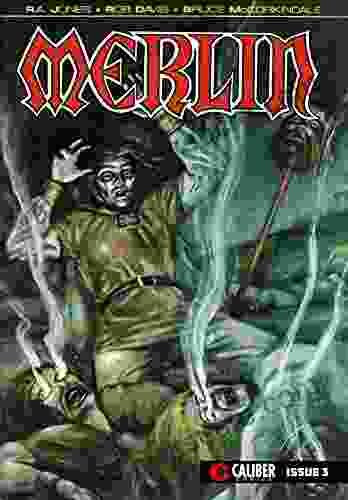
 Jordan BlairMerlin: The Legend Begins - Julietta Suzuki: Embracing the Enchanting Journey...
Jordan BlairMerlin: The Legend Begins - Julietta Suzuki: Embracing the Enchanting Journey...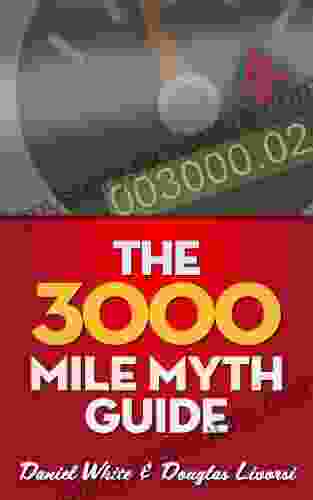
 Isaac MitchellThe 3000 Mile Myth: A Guide to a More Realistic Approach to Distance Running
Isaac MitchellThe 3000 Mile Myth: A Guide to a More Realistic Approach to Distance Running
 George OrwellHeirloom Recipes and Warm Memories from Corgi Cottage: A Culinary Journey of...
George OrwellHeirloom Recipes and Warm Memories from Corgi Cottage: A Culinary Journey of... Edwin BlairFollow ·10.7k
Edwin BlairFollow ·10.7k Clarence MitchellFollow ·19.4k
Clarence MitchellFollow ·19.4k Aubrey BlairFollow ·8.8k
Aubrey BlairFollow ·8.8k Sammy PowellFollow ·7.7k
Sammy PowellFollow ·7.7k George OrwellFollow ·15.4k
George OrwellFollow ·15.4k Ian McEwanFollow ·6.5k
Ian McEwanFollow ·6.5k Ted SimmonsFollow ·6.5k
Ted SimmonsFollow ·6.5k Anthony WellsFollow ·11.9k
Anthony WellsFollow ·11.9k

 Henry David Thoreau
Henry David ThoreauHow To Bake In Unique Way: Unleash Your Culinary...
Baking is an art form that transcends the...

 F. Scott Fitzgerald
F. Scott FitzgeraldAcademic Magic: Unveil the Secrets of The Last Magus
Delve into a Realm of...
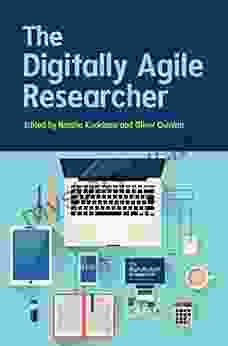
 John Green
John GreenThe Digitally Agile Researcher in UK Higher Education:...
In the rapidly...
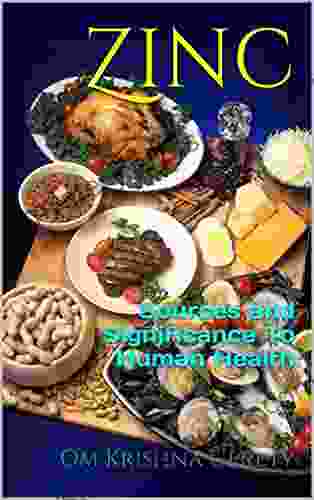
 George Orwell
George OrwellZinc: Sources And Significance To Human Health
Zinc, an essential trace mineral, plays a...
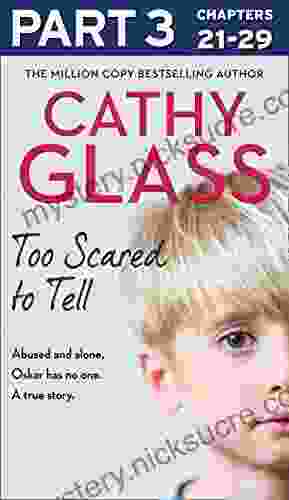
 Mario Simmons
Mario SimmonsToo Scared to Tell: A Harrowing and Thought-Provoking...
In the realm...
4.6 out of 5
| Language | : | English |
| File size | : | 21472 KB |
| Text-to-Speech | : | Enabled |
| Screen Reader | : | Supported |
| Enhanced typesetting | : | Enabled |
| Word Wise | : | Enabled |
| Print length | : | 449 pages |


